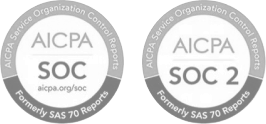Single Touch Payroll
Article Navigation
In recent years, both Australia and New Zealand have taken significant steps toward digitising payroll systems and improving the efficiency of tax and employee payment reporting. One of the key innovations in this space is Single Touch Payroll (STP), which plays a vital role in how businesses report payroll information to government agencies.
Whether you’re an employer, business owner, or payroll manager, understanding the Single Touch Payroll process is essential to ensure compliance and avoid penalties.
What Is Single Touch Payroll?
Single Touch Payroll is a government-led initiative designed to streamline the way businesses report payroll, tax, and superannuation information. In Australia, STP became mandatory for large employers (20 or more staff) in July 2018 and for smaller businesses in July 2019. In New Zealand, the Inland Revenue Department (IRD) introduced its own version of digital payroll reporting through the payday filing system, which operates similarly to STP.
The purpose of Single Touch Payroll is to simplify and improve the accuracy of payroll reporting, reduce administrative burden for employers, and increase transparency for employees and government agencies.
How the Single Touch Payroll Process Works
The Single Touch Payroll process involves using STP-enabled payroll software to automatically send employee payroll information to the tax authority—the Australian Taxation Office (ATO) or New Zealand’s Inland Revenue (IRD)—every time employees are paid.
Each time a payroll is processed, the system sends details such as:
- Gross wages and salaries
- Pay As You Go (PAYG) withholding amounts
- Superannuation contributions (Australia)
- KiwiSaver contributions (New Zealand)
- Leave balances and other entitlements (where applicable)
This information is securely transmitted directly to the relevant authority through the Single Touch Payroll system, making the process efficient and real-time.
Benefits of Single Touch Payroll Reporting
The introduction of Single Touch Payroll reporting has delivered numerous benefits to businesses and employees:
- Streamlined compliance: Employers can meet payroll reporting obligations in real-time without the need for additional end-of-year paperwork.
- Reduced errors: By automating reporting, the chances of manual errors and late submissions are significantly lowered.
- Less administrative burden: No need to prepare and submit annual payment summaries (Australia), as everything is handled digitally.
- Real-time access: Employees can view their updated year-to-date income and tax data via myGov (Australia) or myIR (New Zealand).
- Transparency: Ensures that superannuation (Australia) and KiwiSaver (New Zealand) payments are being made on time.
- Improved oversight: Real-time payroll data allows for better monitoring of compliance and quicker response to discrepancies.
- Support for welfare services: Data can be shared with other government departments to assist with services like Centrelink (Australia) and Work and Income (New Zealand).
Transition to STP Phase 2 (Australia)
In Australia, the STP Phase 2 rollout began in January 2022, requiring even more detailed employee-level information to be reported, such as:
- Employee income types
- Country codes (for foreign income)
- Paid leave breakdowns
- Disaggregation of gross income
All Australian employers are expected to have transitioned to Phase 2 unless they’ve received a deferral or exemption.
Single Touch Payroll System in New Zealand
While New Zealand doesn’t use the term “STP,” the payday filing system is functionally similar. It became mandatory in April 2019 for all employers to file payroll information within two working days of paying employees.
Staying Informed and Compliant
Employers should regularly check for updates from the ATO or IRD to ensure they meet current single touch payroll reporting standards. As technology and legislation evolve, staying ahead of changes in the single touch payroll system can save time, prevent errors, and protect your business from penalties. Whether you run a small business or manage a large workforce, embracing the single touch payroll process is a smart step toward a more transparent and efficient payroll environment.
Conclusion
The implementation of Single Touch Payroll in Australia and New Zealand represents a major step forward in modernising business processes and ensuring transparency in payroll reporting. The Single Touch Payroll system simplifies compliance, improves data accuracy, and benefits employers, employees, and governments alike.
Understanding and adopting the Single Touch Payroll reporting process ensures that your business remains compliant and efficient in a rapidly evolving regulatory environment. As both countries continue to advance in digital reporting, staying up to date with STP requirements is more important than ever.































 Back
Back